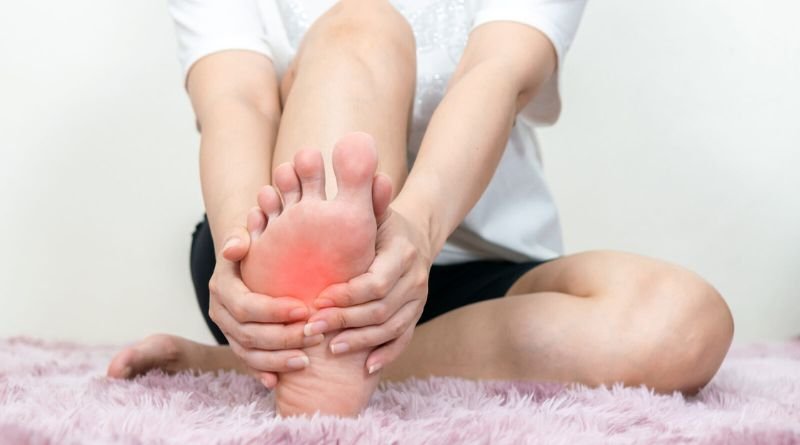Plantar fasciitis is one of the most common causes of heel pain, affecting millions of people each year. It occurs when the thick band of tissue that runs along the bottom of your foot, known as the plantar fascia, becomes inflamed due to repetitive stress or strain. This condition can be incredibly painful and may interfere with daily activities, making it important to seek effective treatments. Among the many treatment options available, plantar fasciitis medical devices have proven to be an essential part of managing the condition, offering relief and improving foot function. In this article, we’ll explore the different plantar fasciitis medical devices, how they work, and why they might be the solution you’ve been looking for.
Table of Contents
What is Plantar Fasciitis?
Plantar fasciitis refers to the inflammation of the plantar fascia, a band of connective tissue that extends from your heel to the front of your foot. It plays a crucial role in supporting the arch of your foot. When this tissue becomes overused or overstretched, micro-tears can develop, leading to pain and inflammation, especially in the heel area.
Common symptoms of plantar fasciitis include:
- Sharp heel pain, especially when you first get up in the morning or after long periods of standing or sitting.
- Pain that improves with movement but returns after prolonged activity.
- Swelling or tenderness at the bottom of the heel.
Plantar Fasciitis Medical Devices: A Key Treatment
Managing plantar fasciitis often involves a combination of rest, physical therapy, stretching, and sometimes medical devices. The use of plantar fasciitis medical devices can be an effective way to reduce pain, improve foot function, and speed up recovery. These devices are designed to relieve pressure on the plantar fascia, promote healing, and prevent further injury. Below, we’ll examine some of the most common and effective plantar fasciitis medical devices available.
1. Orthotic Insoles
Orthotic insoles are custom or over-the-counter foot supports designed to relieve pressure on the plantar fascia. These insoles provide arch support, cushion the heel, and help redistribute pressure more evenly across the foot. By stabilizing the foot and controlling motion, orthotics can reduce the strain on the plantar fascia and prevent further irritation.
- Custom Orthotics: These are specifically molded to fit your foot, ensuring maximum comfort and support. They’re typically prescribed by a podiatrist after assessing the shape of your foot and your walking patterns.
- Over-the-Counter Insoles: These can be purchased at most drugstores or online. While they are not customized, many people find that high-quality over-the-counter insoles provide sufficient support for mild to moderate cases of plantar fasciitis.
2. Night Splints
Night splints are a specialized type of plantar fasciitis medical device designed to be worn while you sleep. The goal of night splints is to gently stretch the plantar fascia and Achilles tendon while you’re resting. This prevents the fascia from tightening overnight, which is a common cause of the sharp pain people experience in the morning.
Night splints work by holding the foot in a dorsiflexed position (toes pointing upward), which helps maintain a gentle stretch on the plantar fascia and calf muscles. This stretching can alleviate morning pain and improve flexibility over time.
- Benefits of Night Splints:
- Reduced morning heel pain.
- Prevents the fascia from tightening during sleep.
- Helps promote the healing process by improving flexibility.
3. Foot Massagers
Using foot massagers designed specifically for plantar fasciitis is another effective way to manage the pain. These devices apply gentle pressure to the bottom of the feet, helping to increase blood flow, reduce tension, and alleviate pain. Some foot massagers also include heating elements that can further relax the foot muscles and promote healing.
- Electric Foot Massagers: These massagers typically have rollers or nodes that provide deep tissue massage to the plantar fascia, which can help relieve chronic pain.
- Manual Foot Rollers: These are simple, portable devices that can be rolled under the feet to provide a soothing massage. Some are designed with textured surfaces to help target specific pressure points.
4. TENS Units (Transcutaneous Electrical Nerve Stimulation)
A TENS unit is a device that uses low-voltage electrical currents to relieve pain. By placing electrode pads on the skin near the painful area, the TENS unit stimulates nerves and muscles, blocking pain signals and promoting the release of endorphins (the body’s natural painkillers). This can be particularly useful for individuals dealing with chronic plantar fasciitis pain.
- How TENS Works for Plantar Fasciitis: The electrical impulses interrupt the pain signals sent to the brain, providing temporary relief from heel and arch pain. TENS units are portable and easy to use, allowing for at-home treatment.
- Benefits:
- Provides pain relief without medication.
- Non-invasive and safe.
- Can be used as part of a comprehensive treatment plan.
5. Compression Sleeves and Socks
Compression sleeves and socks designed for plantar fasciitis can help reduce swelling and improve circulation in the feet. These devices apply gentle compression to the foot, arch, and heel, providing support and reducing the strain on the plantar fascia. Compression garments are particularly useful for individuals with swelling or inflammation in the feet.
- Compression Socks: These socks typically feature graduated compression, which means they apply the most pressure at the ankle and gradually decrease as they move up the leg. This helps improve blood flow and reduce edema, or swelling.
- Compression Sleeves: These are usually worn around the arch or heel area and can be a great option for targeted compression.
6. Heel Cups and Cushions
Heel cups and cushions are plantar fasciitis medical devices that provide additional cushioning for the heel area. Made from soft, shock-absorbing materials, heel cups help reduce the impact on the heel when walking or standing. They can be inserted into shoes to provide immediate relief and make daily activities more comfortable.
- Gel Heel Cups: These are designed to absorb shock and provide cushioning for the heel, which is particularly helpful during walking, running, or standing for long periods.
- Foam Heel Cushions: These are lightweight and provide soft support to reduce pressure on the plantar fascia.
7. Foot Stretching Devices
Foot stretching devices are designed to help individuals stretch the plantar fascia and Achilles tendon, which are key components in relieving the pain of plantar fasciitis. These devices typically have a footplate that allows the user to stretch their foot in a controlled manner. Regular stretching of the plantar fascia can improve flexibility, reduce pain, and help prevent future flare-ups.
FAQs About Plantar Fasciitis Medical Devices
1. Can plantar fasciitis medical devices cure the condition?
While plantar fasciitis medical devices can provide significant relief and help reduce pain, they do not cure the condition on their own. A combination of treatments—such as rest, stretching exercises, physical therapy, and, in some cases, surgery—may be needed for complete recovery. However, using these devices regularly can speed up recovery and reduce the need for more invasive treatments.
2. Are night splints uncomfortable to wear?
Night splints can feel uncomfortable at first, especially if you are not used to wearing them. However, most people find that they get accustomed to the sensation over time. It’s important to start wearing them for short periods and gradually increase the time as your foot becomes accustomed to the stretch.
3. How long should I use a TENS unit for plantar fasciitis?
A typical TENS session lasts around 15-30 minutes, but it is important to follow the manufacturer’s guidelines for your specific device. You can use the TENS unit up to three times a day, depending on your pain levels and the advice of your healthcare provider.
4. Can compression socks help prevent plantar fasciitis?
Compression socks may not directly prevent plantar fasciitis, but they can help reduce swelling and promote circulation, which may reduce the risk of flare-ups in individuals prone to the condition. They are most effective when used as part of a comprehensive treatment plan.
5. Are there any side effects to using plantar fasciitis medical devices?
Most plantar fasciitis medical devices are safe to use with little risk of side effects. However, improper use of night splints, TENS units, or other devices can cause discomfort or exacerbate pain. It’s essential to follow the manufacturer’s instructions carefully and consult a healthcare provider if you have concerns.
Conclusion
Dealing with plantar fasciitis can be frustrating and painful, but plantar fasciitis medical devices offer effective solutions to manage and alleviate symptoms. Whether you choose orthotic insoles, night splints, or other devices, these tools can play a key role in improving comfort, reducing pain, and promoting recovery. If you’re struggling with plantar fasciitis, it’s worth considering these devices as part of your treatment plan, in combination with stretching exercises and physical therapy, to find the best solution for your needs.






